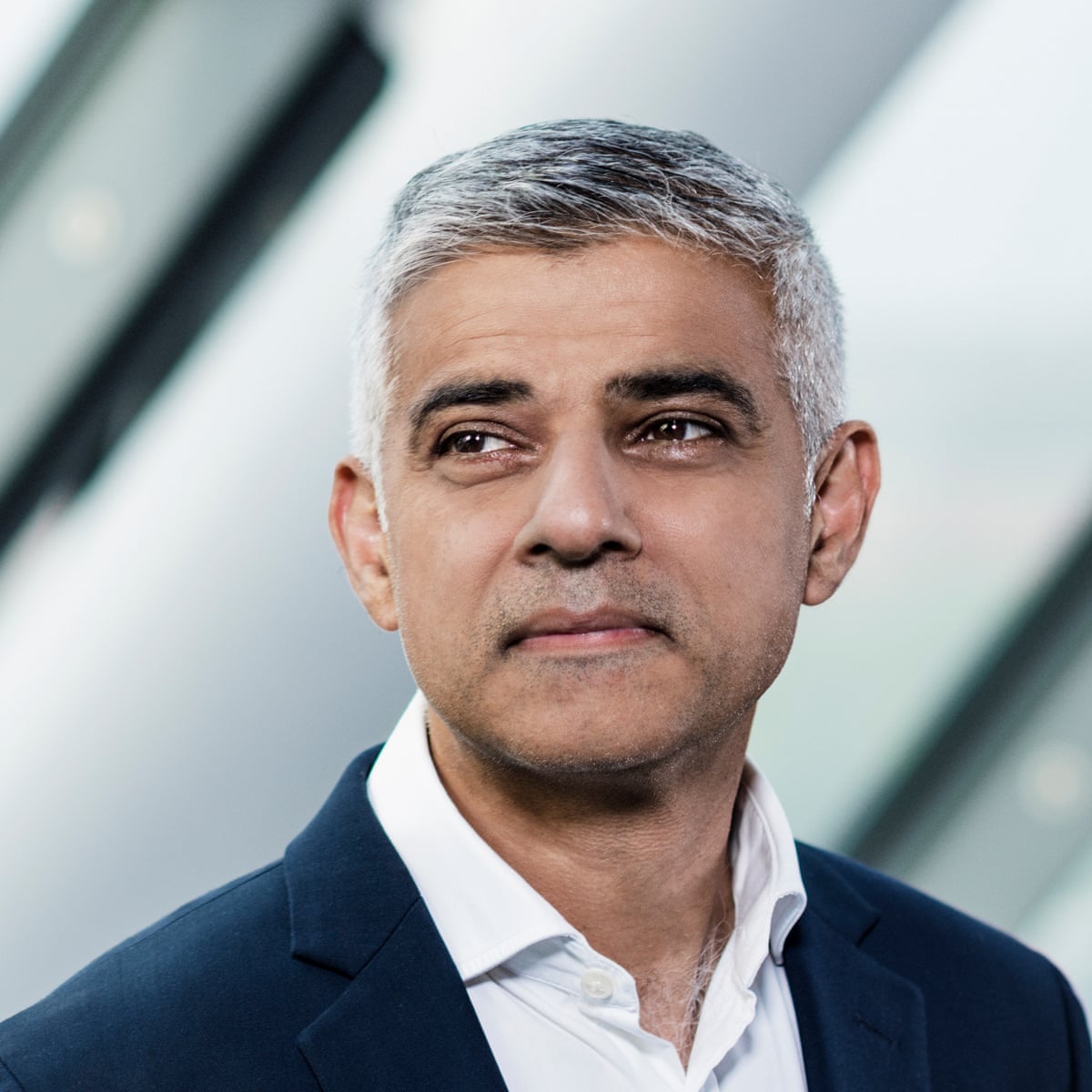Power and Promise: London Re-Elects Sadiq Khan as Mayor
9 May 2021
9 May 2021
Power and Promise: London Re-Elects Sadiq Khan as Mayor
On ‘Super Thursday’ 6 May, nearly 50 million constituents took to the polls to vote in candidates for 13 devolved local and regional mayors, 39 Police, Fire and Crime Commissioners, the Scottish parliament, the Welsh Senedd, 143 English councils, a Greater London Assembly and to elect an MP for Hartlepool.
On Saturday 8 May, Sadiq Khan who became the first Muslim to head a major Western capital after his victory in 2016, was declared the Mayoral winner in London by 55.2% of the votes.
Khan’s success comes after a bruising set of results for Labour in local elections in its former heartlands in central and northern England – known as the party’s “Red Wall”. In other parts of the U.K, history was made…

Joanne Anderson elected as new Mayor of Liverpool
Labour’s Joanne Anderson was elected as the City Mayor of Liverpool. The councillor, who has represented the Princes Park ward since 2019, made history as she became the first Black Woman to lead a major British city. She claimed victory after voting went to second preferences, winning 59.2% of the vote while independent candidate Stephen Yip came second with 40.8%.
Back in September 2020, Deputy Mayor Maria Lovell became the second Black Woman and the first of African heritage (born in Ghana) in the mayoral role in Luton.
Over 20 years ago, the Greater London Authority (GLA) Act 1999 created a strategic government for London, consisting of an executive Mayor and a small, scrutiny-oriented Assembly. The primary responsibility of the Assembly is to scrutinise the Mayor’s actions – this includes the budget, the London Plan and other strategies, and the bodies under mayoral control: Transport for London, the Metropolitan Police, the London Fire Brigade, development corporations and The London Economic Action Partnership.
The 1,206,034 votes won by Sadiq Khan was the second highest total in the history of the London mayoralty (after his record 1.3m win in 2016). His 228,433 majority over Conservative Shaun Bailey was also the second highest on record (after his 315,000 majority in 2016).

Sadiq Khan: claimed “overwhelming mandate” after receiving 1.2m votes / PA
Although the margins were comfortable, many people did not turn out to vote, and many chose not to vote for him. Why, because too many social inequalities continue to exist in the capital, and too many unresolved issues have led to political apathy and disillusionment; from rising air pollution, overcrowding and a lack of social housing, to the corporate manslaughter and criminal neglect shown to the residents of Grenfell Tower, to the rise in youth unemployment, job scarcity, and rising violent crime, particularly stabbings involving teenagers.
According to Trust for London’s Poverty Profile 2021
- 28% of Londoners are living in poverty, after housing costs
- 56,000 London households are in temporary accommodation – an increase of 30% compared to five years ago
- 76% of children in poverty in London are in working families – an increase of 8%, or 80,000 children, from five years ago.
In terms of the impact of COVID-19 on mortality, 4.43m cases has resulted in more than 128,000 people across the UK losing their lives. In London alone, more than 17,000 have died. The human costs of this are immeasurable. COVID-19 infections have not been evenly spread across London’s population. In fact, the rate of positive tests between July 2020 and March 2021 was a third (35%) higher in the most deprived 20% of London neighbourhoods, compared with the least deprived 20% of neighbourhoods.
In a recent poll, 60% of Londoners picked the economy, education or inequality as a top issue facing London. They are right to be concerned about the city’s economy and access to opportunity. London has seen a bigger rise in unemployment than any other region and is also recovering much more slowly. Young people have been at the sharp end of this, accounting for half of all job losses, with young Black people most affected.
The labour market and unemployment has been structural and frictional owing to the pandemic. Restrictions to slow the spread of the virus, as well as the impact of the pandemic itself, have had a seismic impact on the UK’s labour market and London has not been immune to this.
While the government’s schemes have protected many jobs, the scale of the economic impact of the pandemic has still had a significant effect on employment in the capital. In February 2021, the number of jobs – as measured by PAYE data – had fallen by 5% in London since February 2020. This equates to just over 209,000 fewer jobs. The fall in payrolled jobs has also been larger in London compared to the rest of England, which saw a 1.9% fall between February 2020 and February 2021.
The combined health, economic and social impacts of the pandemic have taken a significant toll on the living standards of Londoners, with more Londoners relying on food banks. In the six months to September 2020, food banks run by members of the Trussell Trust network in London distributed 210,000 food packages to people in the capital, a 128% increase compared to the same period in 2019. The increase in the rest of England was 56%, demonstrating the severe financial pressures being placed on families in the capital.
The pandemic has also created an education emergency due to lost learning: children have lost over five per cent of their entire time in school – and the Institute for Fiscal Studies estimates that their aggregate lifetime earnings will be £350 billion lower because of this. Again, the impact of learning loss has been concentrated among disadvantaged pupils, who have had less home learning. However, the Mayor has no formal powers over what happens in schools or how they are funded: early years, primary and secondary education are entirely funded and regulated by government. So, the Mayor won’t be able to change what happens in schools.
He does, however have some powers regarding adult education. Adult education spending was £4.5bn for England in 2010, by 2019 it was £1.4 billion – a 75 per cent reduction in real terms. The London portion of the Adult Education Budget is just over £300 million a year, which may sound like a lot – but in reality, is only about £45 per adult, while fees for full-time courses at a university or local college are usually in the thousands of pounds.
Last year was a quiet milestone in terms of skills policy: the devolution of the Adult Education Budget agreed in 2016 finally kicked in, giving London and six other cities more control over courses for adults (previously no UK city had formal powers over education spending). The Adult Education Budget brings together funds for adults to engage in part- or full-time courses outside the apprenticeship framework, as well as top up courses spanning language, work preparation or arts courses.
To make up for the cut in funding the government introduced the apprenticeship levy on employers, which was worth £2.4 billion in 2019. But employers get to decide which courses to spend the levy on and unspent funds are transferred to government, not the Mayor. And where new investment has been unlocked in response the pandemic, such as the National Skills Fund, government allocated it themselves, again without involving London’s Mayor.
Second, the Mayor currently distributes the European Social Fund for investment in education projects, worth one fifth of the London portion of the Adult Education Budget. The government plans to replace European funds with the Shared Prosperity Fund, but this will be allocated centrally – essentially removing funding from the hands of local and regional government.
So, what promises has the re-appointed Mayor made?
Khan’s manifesto reflects on a tumultuous five years, from Brexit to national political instability, tragedies and terrorism, as well as unsurprisingly, the pandemic that pushed the elections back by a year. The enormity of the challenge facing Khan is not lost on him, as he frames his plan as one that will ensure the recovery leads to a better city.
So, what of his policies? Khan’s manifesto covers everything from creating jobs and reviving central London’s economy, to tackling crime, working to put Transport for London on a sustainable footing and increasing the number of affordable homes. At the heart of the manifesto is his pledge to a 10 point ‘Green New Deal’ covering greener transport, air pollution, access to nature, a clean energy revolution and protection of the Green Belt.
Title Fight: Wins vs. Losses
ENVIRONMENT
Some of the most significant achievements of Sadiq Khan’s five years have been on the environment. The most obvious example was the introduction of the central London Ultra Low Emission Zone (ULEZ) in April 2019 — 17 months ahead of the schedule. It is being extended in October to cover the entire area up to the north and south circular roads and will force drivers of polluting vehicles which breach its limits to pay a daily £12.50 fee.
Mr Khan was also responsible for the introduction in 2017 of an earlier £10 toxicity “T-charge” on top of the congestion charge for polluting vehicles and is planning a boundary charge which will lead to drivers entering the capital from outside paying £3.50 a day for the privilege. It all means that the Mayor can justifiably claim credit for improving the capital’s air quality and reducing the amount of toxic pollutants threatening the health of Londoners. I’m sure the family of Ella Kissi-Debrah who recently won a landmark case, attributing air pollution to the death of their daughter don’t share in Sadiq’s triumph.
There has been progress on cycling too, with an increase in segregated lanes and the spread of low traffic neighbourhoods, despite the controversy they have caused. Sadiq has also managed to boost his environmental credentials by supporting the planting of tens of thousands of trees. However, there are still too few charging points for electric cars and switching the capital’s bus fleet to all-electric is not scheduled to be completed for many years. The Mayor’s ambition for London to be “carbon neutral” by 2030 will also be hard to achieve.
HOUSING
Sadiq Khan’s supporters take pride in the record number of “genuinely affordable” new homes being built in London with more than 3,000 starts last year for council housing backed by the Greater London Authority. The proportion of affordable homes in new developments is also higher, at 37 per cent. But progress overall in meeting the capital’s housing needs remains well short of what’s needed according to most calculations — a fact which can be partly attributed to the COVID crisis and Brexit aftermath — and there’s little sign, beyond the success of flagship “affordable” schemes, of any significant change in the reality of large numbers of young buyers being effectively priced out by the high cost of home ownership. Property market values are at an all-time high, averaging £501,320 according to Land Registry figures, up seven per cent on the £467,485 when he assumed office. This leaves the bottom rung of the housing ladder out of reach for hundreds of thousands of younger “generation rent” workers who do not qualify for subsidised housing.
Trust for London estimates, meanwhile, that the number of households in temporary accommodation hit 60,000 last year for the first time since 2006, with the total rising through the Mayor’s extended term. Mr Khan’s Tory critics claim that his record on affordable housing has been well short of what was originally promised, particularly in light of the near £5 billion of funding already pumped in by the taxpayer and the plan for another £4 billion of investment over the next five years. They say that an initial pledge to start work on 116,000 homes by 2022 — a deadline pushed out to 2023 because of the pandemic — is way off target with starts on only 56,239 houses and flats subsidised by City Hall.
CRIME
The number of young Londoners dying in knife killings, which have already claimed 12 teenage lives in the capital this year, is the most heart-rending of the failures of the Mayor to turn the tide of youth violence. Not only is each death bad enough, but the data shows too that for all the Met’s efforts and partial success in reducing the number of serious knife injuries among the young, the overall level of knife crime in the capital has been close to record levels throughout Mr Khan’s time in office. Worse still for the Mayor, it is far higher than when Boris Johnson left office.
The comparison, for example, between the 15,928 knife crimes recorded in London by the Office for National Statistics for the year to the end of March 2020, the last period before the coronavirus restrictions kicked in, with the 9,752 offences in the 12 months to the start of April 2016, the final phase of Mr Johnson’s stay in City Hall, makes particularly difficult reading for the Mayor.
Mr Khan has repeatedly tried to blame government funding cuts, both to police and youth services, for contributing to the problem. But his change of tack over policies such as stop and search and dithering over the introduction of a “public health” approach to tackling the underlying causes of offending are seen by his critics as evidence of the Mayor’s own failure.
Nor has the Mayor helped himself with his recent admission in the wake of the killing of Sarah Everard and Blessing Olusegun that London is not safe for women, given that he has had five years in charge of policing in the capital to ensure that isn’t the case. The suspicion remains that Mr Khan’s main focus lies elsewhere other than on crime.
TRANSPORT
The spectacular new Crossrail stations built to carry thousands of passengers a day across London should have been one of the flagship symbols of Sadiq Khan’s mayoralty. But instead of opening on time, in December 2018, the unused platforms have turned into what critics allege is a prime illustration of his inability to run an effective City Hall administration. The official opening date for the Elizabeth line, as the project is officially known, is now next year with software and signalling problems and construction challenges among factors blamed for the long delay.
The impact of COVID has worsened the situation and the overall cost of the line has jumped by an extra £4 billion, necessitating a series of government bailouts. He did, however, secure the appointment of Andy Byford as TfL commissioner. Late last year, Mr Byford assumed overall control of Crossrail and remains optimistic about opening it by the end of this year. But the embarrassment of Crossrail is not the only question mark over Mr Khan’s oversight of Transport for London.
For all those who live in the capital, Sadiq has underachieved, and failed to honour his previous mayoral bid pledges. With a new manifesto and another three years to improve, I’m sure all Londoners are hoping for a better future post COVID for the city.
Header Image: London Mayor sadiq Khan. Photo credit: Shamil Tanna/The Guardian





